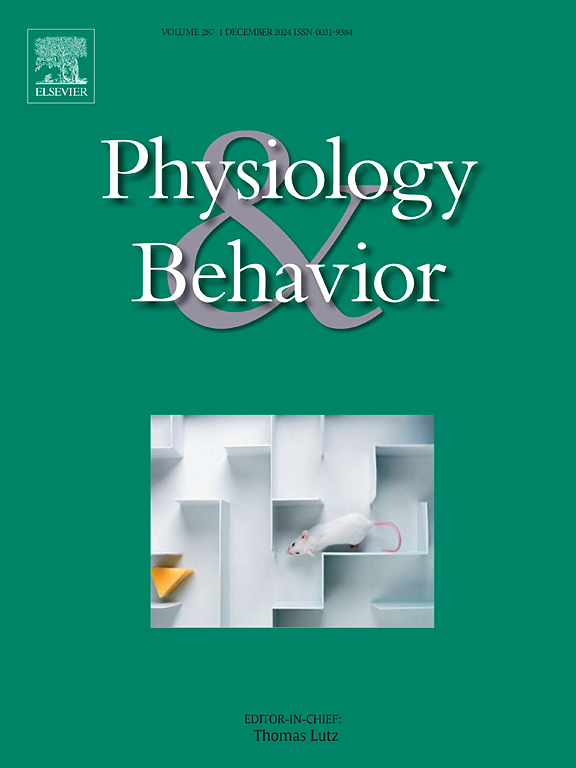Resting autonomic activity predicts the efficiency of approach-avoidance responses to emotional faces
IF 2.4
3区 医学
Q2 BEHAVIORAL SCIENCES
引用次数: 0
Abstract
In social situations, adaptive responses to another are crucial for smooth interactions, requiring immediate actions based on contextual cues. While previous studies have demonstrated the importance of autonomic nervous system (ANS) in emotional processing, the relationship between resting ANS activity and approach-avoidance responses to emotional faces remains unclear. This study investigated how resting autonomic nervous activity measured by skin conductance level (SCL) relates to approach-avoidance decisions in response to facial expressions. After recording resting SCL, participants performed an approach-avoidance task (AAT) with emotional facial stimuli. The task required either approaching happy faces while avoiding angry faces (value-congruent condition) or the opposite pattern (value-incongruent condition). Reaction times (RTs) were significantly faster in value-congruent conditions compared to value-incongruent conditions. The resting SCL showed a significant correlation with the congruency effect (RT difference between conditions). These findings suggest that resting autonomic states, particularly sympathetic arousal, may contribute to the efficiency of approach-avoidance responses. Higher sympathetic activity at rest predicted more efficient responses to emotional faces, potentially reflecting enhanced action readiness. These results extend previous findings on ANS involvement in emotional processing to the domain of approach-avoidance responses to social stimuli, highlighting the role of physiological states in adaptive social behaviour.
静息自主神经活动预测了对情绪化面孔的接近-回避反应的效率
在社交场合,对他人的适应性反应对于顺利的互动至关重要,需要根据上下文线索立即采取行动。虽然先前的研究已经证明了自主神经系统(ANS)在情绪处理中的重要性,但静息自主神经系统活动与对情绪面孔的接近回避反应之间的关系尚不清楚。本研究探讨了静息自主神经活动如何通过皮肤电导水平(SCL)测量与面部表情反应中的避近决策之间的关系。在记录静息SCL后,参与者在情绪面部刺激下执行接近-回避任务(AAT)。这项任务要么要求接近快乐的面孔,同时避开愤怒的面孔(价值一致条件),要么要求相反的模式(价值不一致条件)。在价值一致条件下的反应时间显著快于价值不一致条件下的反应时间。静息SCL与一致性效应(条件间RT差异)呈显著相关。这些发现表明静息自主神经状态,特别是交感神经觉醒,可能有助于接近-回避反应的效率。休息时更高的交感神经活动预示着对情绪激动的面孔的更有效的反应,潜在地反映了增强的行动准备。这些结果将先前关于ANS参与情绪加工的发现扩展到对社会刺激的趋近回避反应领域,突出了生理状态在适应性社会行为中的作用。
本文章由计算机程序翻译,如有差异,请以英文原文为准。
求助全文
约1分钟内获得全文
求助全文
来源期刊

Physiology & Behavior
医学-行为科学
CiteScore
5.70
自引率
3.40%
发文量
274
审稿时长
47 days
期刊介绍:
Physiology & Behavior is aimed at the causal physiological mechanisms of behavior and its modulation by environmental factors. The journal invites original reports in the broad area of behavioral and cognitive neuroscience, in which at least one variable is physiological and the primary emphasis and theoretical context are behavioral. The range of subjects includes behavioral neuroendocrinology, psychoneuroimmunology, learning and memory, ingestion, social behavior, and studies related to the mechanisms of psychopathology. Contemporary reviews and theoretical articles are welcomed and the Editors invite such proposals from interested authors.
 求助内容:
求助内容: 应助结果提醒方式:
应助结果提醒方式:


